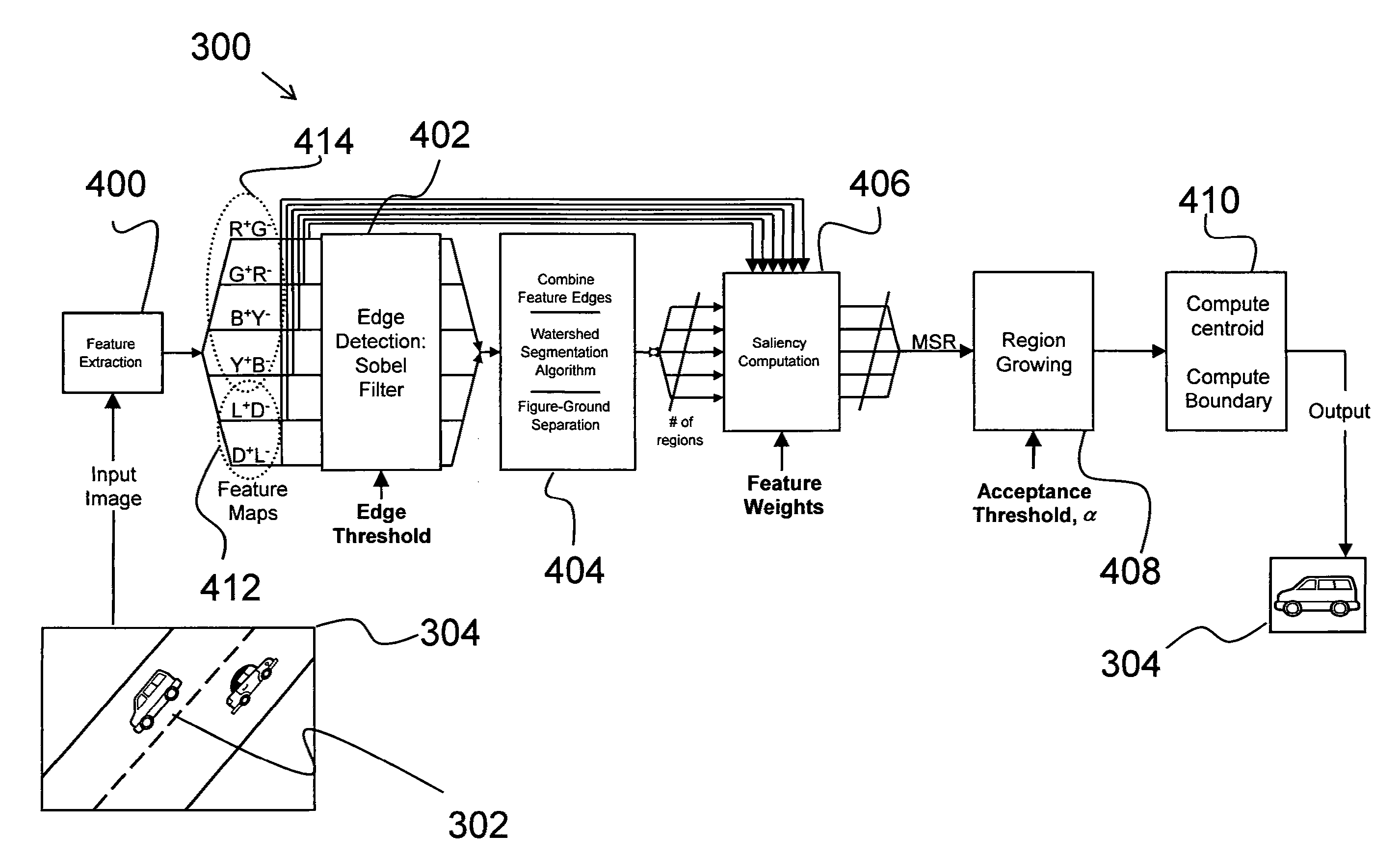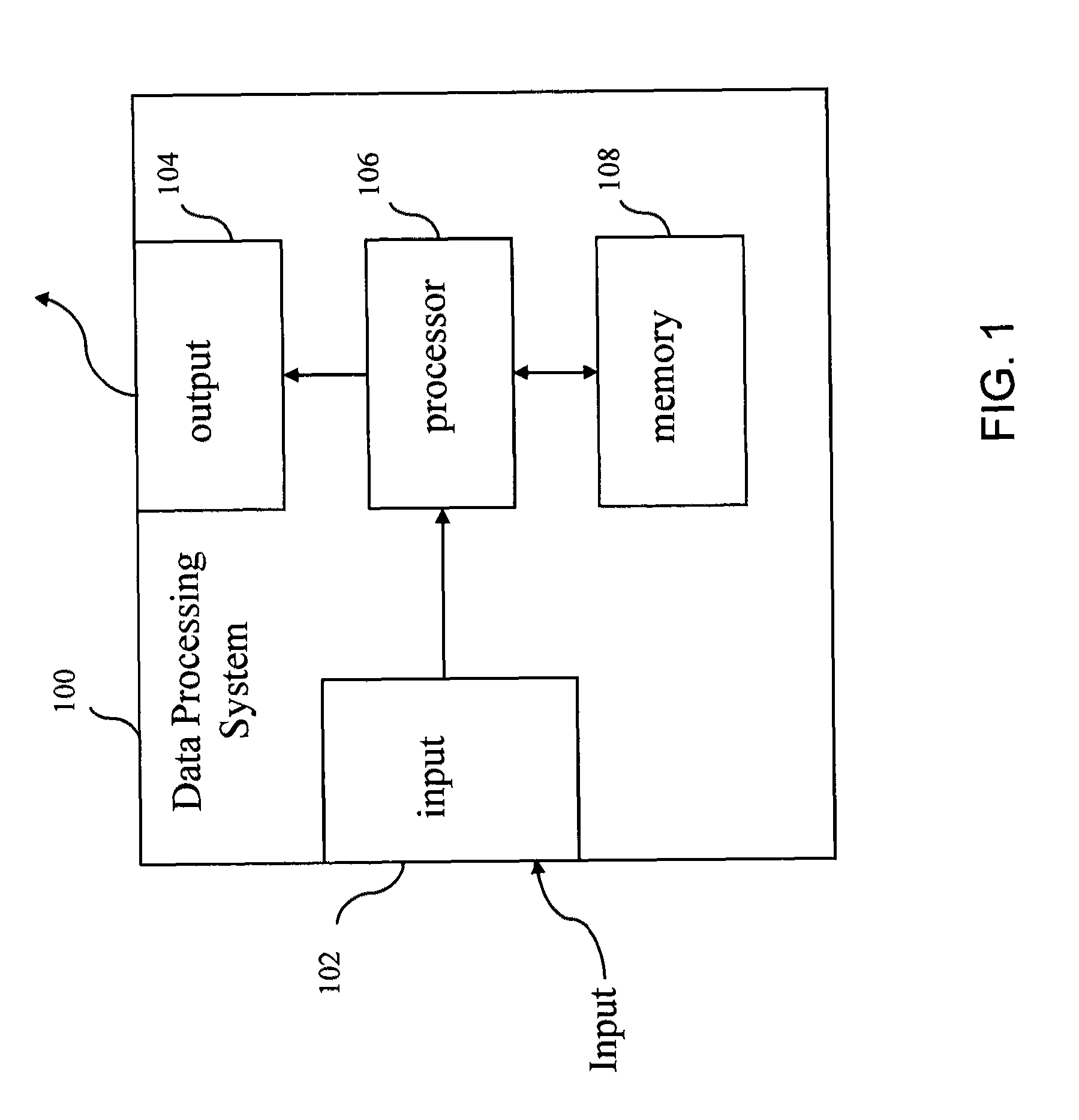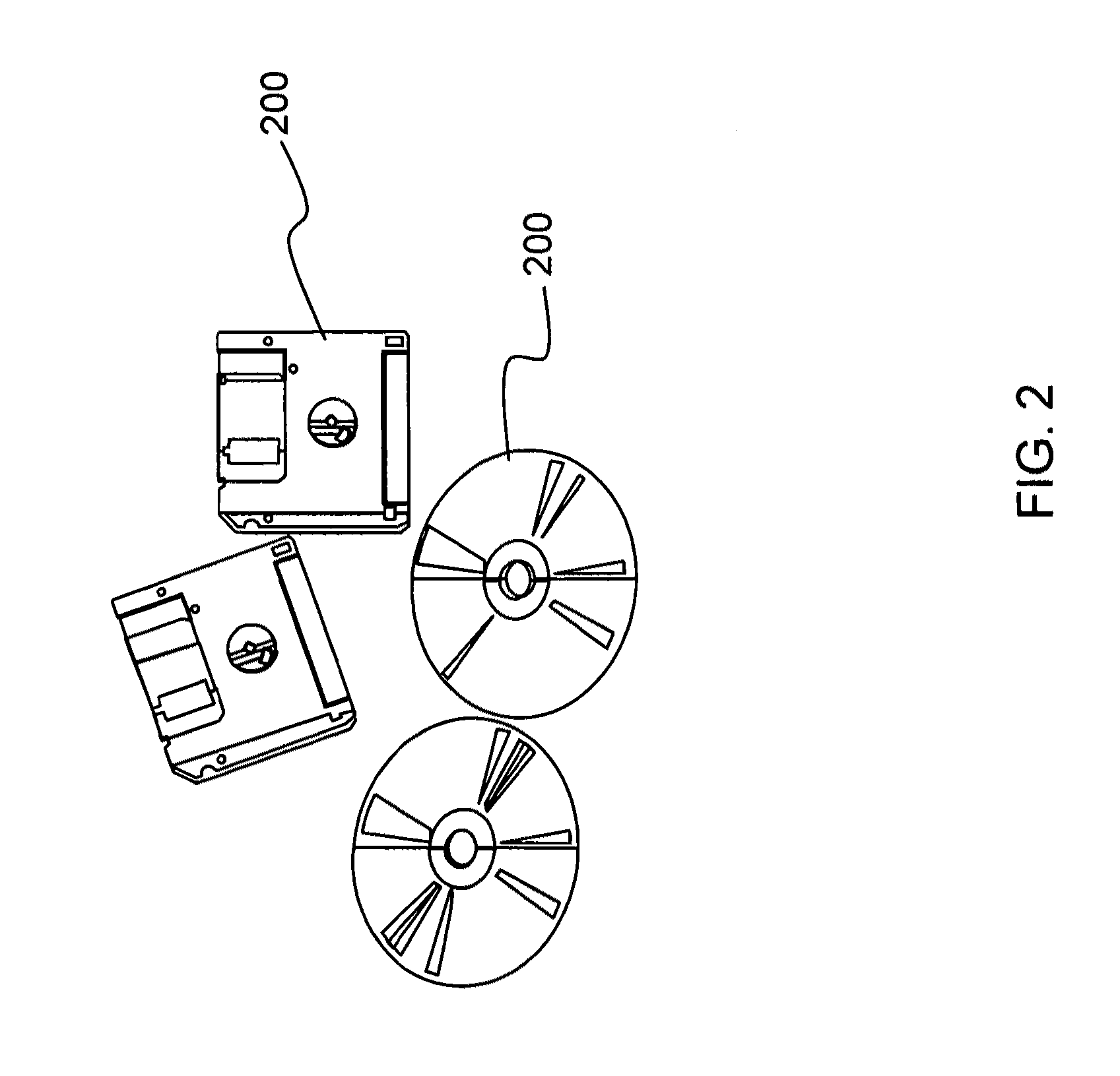Visual attention and segmentation system
a visual attention and object technology, applied in the field of object recognition system, can solve the problems of not being suited for real-time applications, existing bio-inspired systems have not been robustly tested on real-world image datasets, and are difficult to solv
- Summary
- Abstract
- Description
- Claims
- Application Information
AI Technical Summary
Benefits of technology
Problems solved by technology
Method used
Image
Examples
Embodiment Construction
[0036]The present invention relates to an object recognition system and, more specifically, to a bio-inspired vision system that can (1) compute attention for a natural scene and attend to regions in a scene in their rank of saliency, (2) extract the boundary of an attended proto-object based on feature contours to segment the attended object, and (3) if biased, can boost the attention paid to specific features in a scene, such as those of a desired target object in static and video imagery.
[0037]The following description is presented to enable one of ordinary skill in the art to make and use the invention and to incorporate it in the context of particular applications. Various modifications, as well as a variety of uses in different applications will be readily apparent to those skilled in the art, and the general principles defined herein may be applied to a wide range of embodiments. Thus, the present invention is not intended to be limited to the embodiments presented, but is to...
PUM
 Login to View More
Login to View More Abstract
Description
Claims
Application Information
 Login to View More
Login to View More - R&D
- Intellectual Property
- Life Sciences
- Materials
- Tech Scout
- Unparalleled Data Quality
- Higher Quality Content
- 60% Fewer Hallucinations
Browse by: Latest US Patents, China's latest patents, Technical Efficacy Thesaurus, Application Domain, Technology Topic, Popular Technical Reports.
© 2025 PatSnap. All rights reserved.Legal|Privacy policy|Modern Slavery Act Transparency Statement|Sitemap|About US| Contact US: help@patsnap.com



